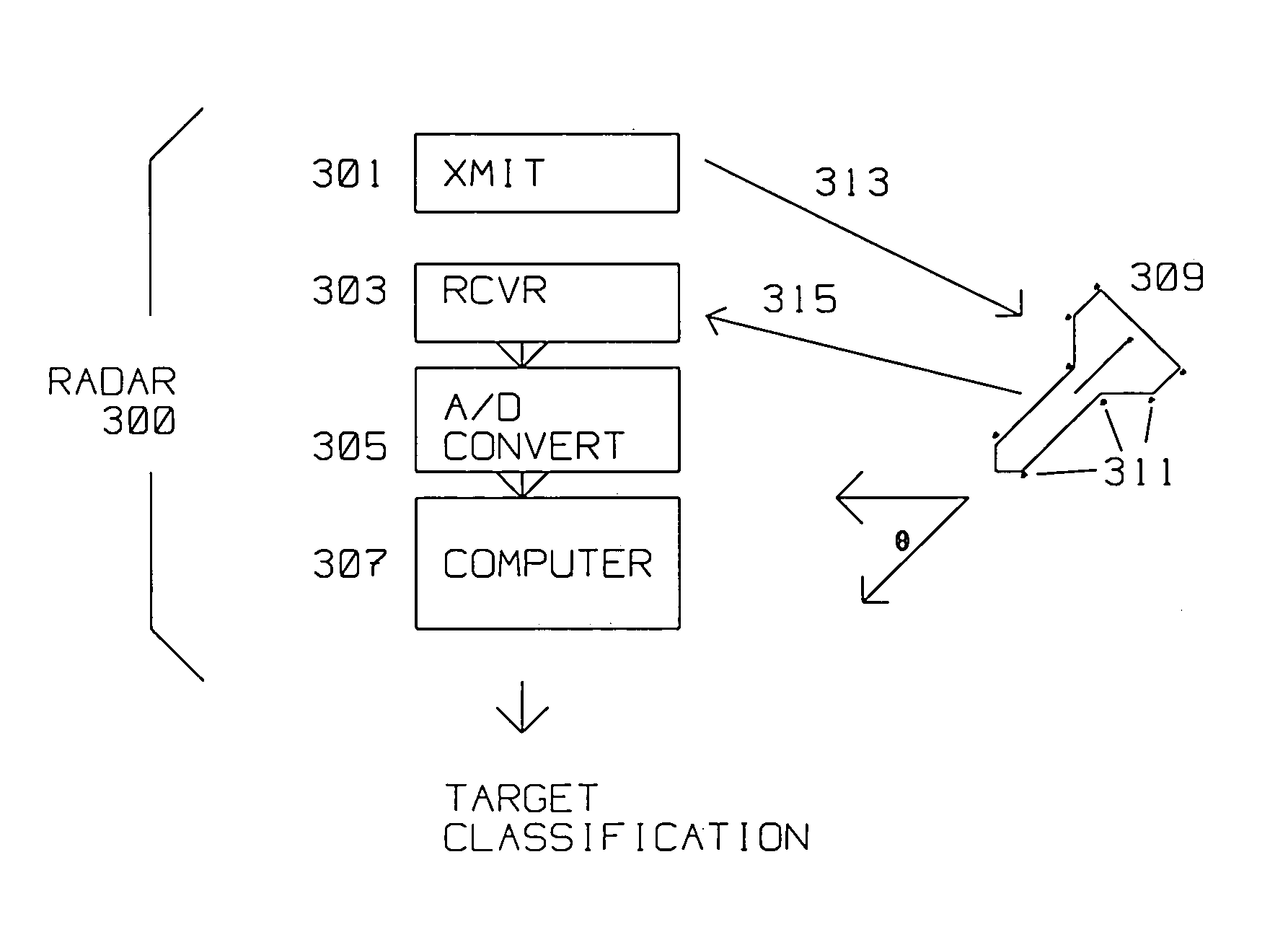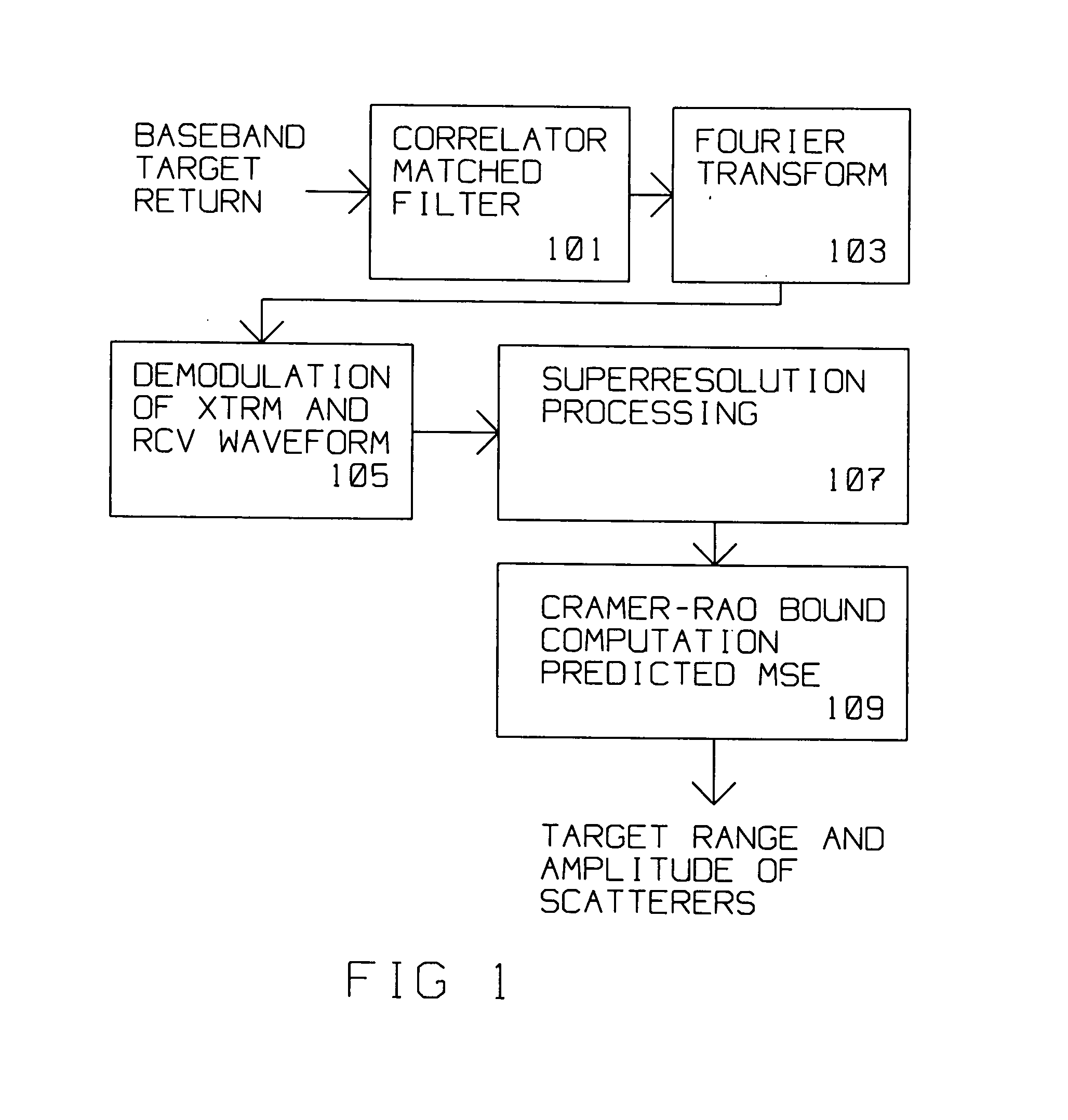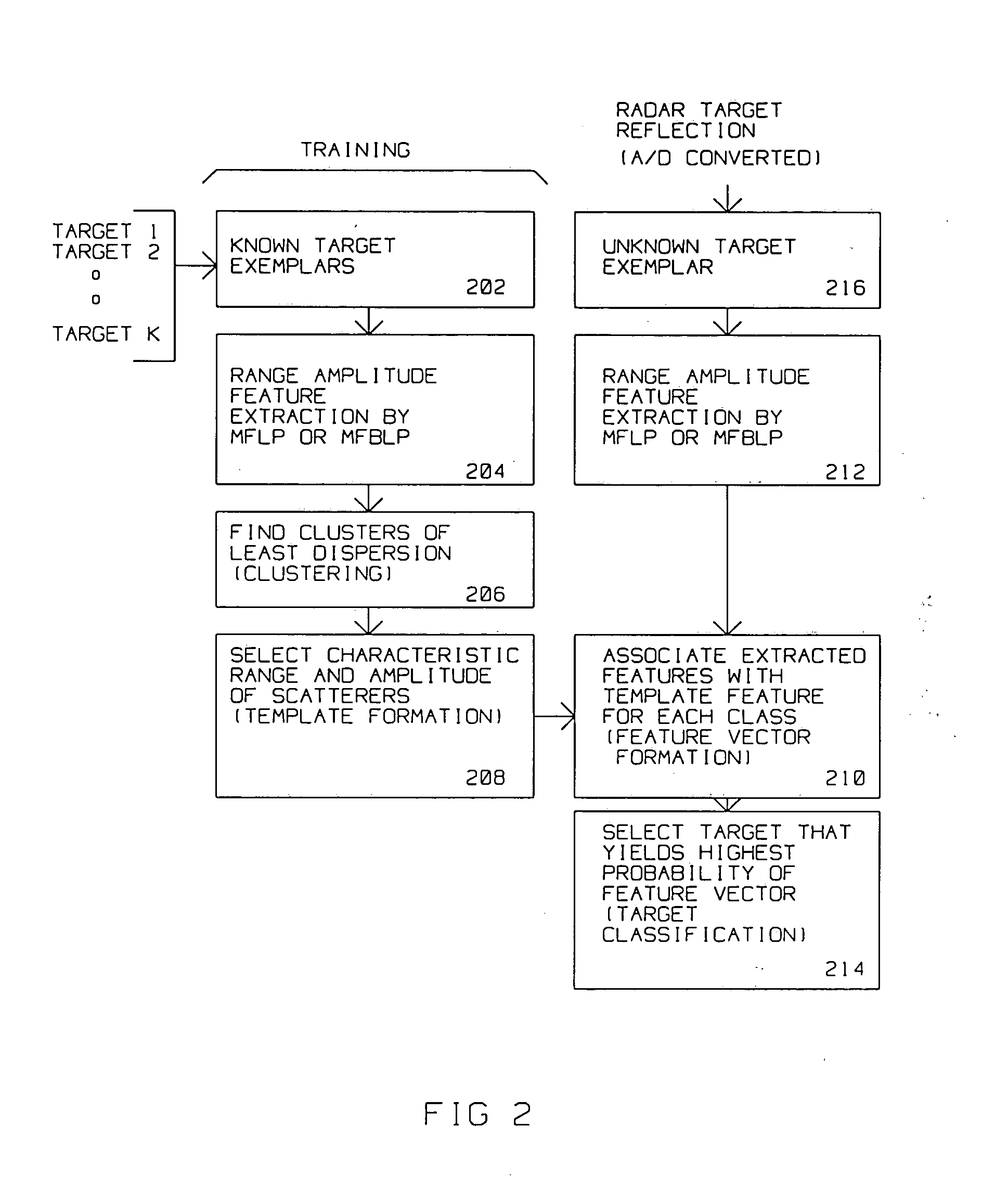Super high range resolution amplitude and range principal scatterer (SHARP) classifier
a classifier and high-range resolution technology, applied in the field of radar target classification using target range profiles, can solve the problems of large computational load on the host computer, long dwell time on the target, and the ability of the processor, and achieve the effect of reducing computation load
- Summary
- Abstract
- Description
- Claims
- Application Information
AI Technical Summary
Benefits of technology
Problems solved by technology
Method used
Image
Examples
Embodiment Construction
[0021]The present disclosure describes a High Range Resolution (HHR) radar and method for target feature extraction used for radar target classification.
[0022]Illuminating a radar target to be classified with a large bandwidth (BW) radar waveform yields a distribution of target radar cross section (RCS) over range after pulse compression. This is the target range profile. After demodulating the transmitted waveform, typically pulse compression or range matched filter operation is computed using a Fourier transform. The range resolution after the pulse compression is given by
[0023]1.5c(2BW)
[0024]where c is the speed of light in air and
[0025]BW is the radar bandwidth.
[0026]The factor of 1.5 is used to account for weighting and tapering in the matched filter. A typical range profile for target classification consists of several hundred range bins of width less than the range resolution. The radar cross section of a target is two dimensional, i.e. it consists of a distribution of poin...
PUM
 Login to View More
Login to View More Abstract
Description
Claims
Application Information
 Login to View More
Login to View More - R&D
- Intellectual Property
- Life Sciences
- Materials
- Tech Scout
- Unparalleled Data Quality
- Higher Quality Content
- 60% Fewer Hallucinations
Browse by: Latest US Patents, China's latest patents, Technical Efficacy Thesaurus, Application Domain, Technology Topic, Popular Technical Reports.
© 2025 PatSnap. All rights reserved.Legal|Privacy policy|Modern Slavery Act Transparency Statement|Sitemap|About US| Contact US: help@patsnap.com



